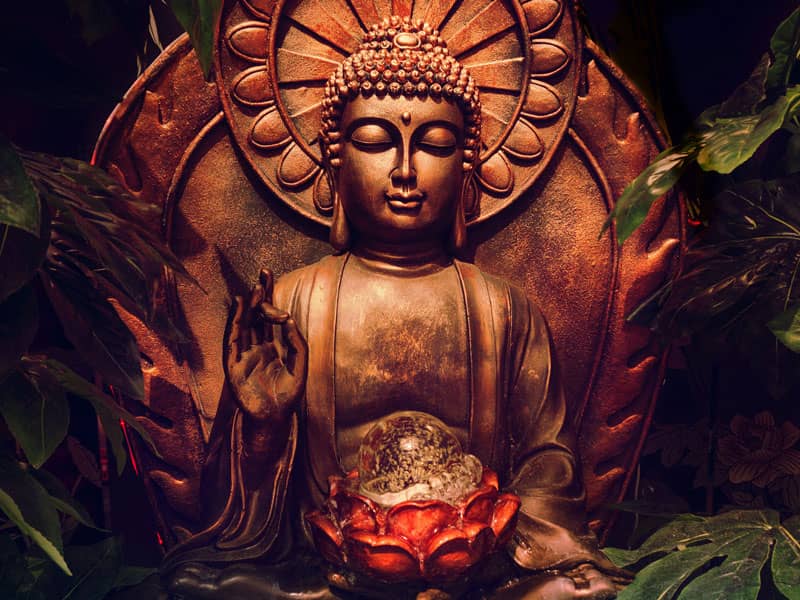The gatherings were informal, and after the sitting cushions had been set aside, there was lots of time for food and conversation.
But last week, when the founding members of the Chapel Hill Zen Center gathered to install an abbot in the temple they had built, the event was neither small nor informal.
For members of this flourishing center, it was a kind of "coming of age"--an acknowledgement that they were no longer a tiny collection of Zen enthusiasts but a serious and deeply committed group of practitioners who wanted a formal Buddhist temple and a resident abbot to transmit the Zen heritage to its members and the wider community.
Pat Phelan, the center's priest for the past nine years, was the focus of the ceremony, which promoted her to one of the loftiest positions in Zen Buddhism.
In keeping with tradition, Phelan shaved her head for the ceremony and was presented a gold silk robe. Eleven Zen priests, including several abbots, from across the United States attended the event, known as a "Mountain Seat" ceremony, in which the newly installed abbess literally ascends to stand on a platform above the community.
"It's a mark of maturity on the part of the Zen Center that we're requesting she become our abbess," said Howard Smither, the president of the Chapel Hill Zen Center, referring to Phelan. "We want her to be elevated to a higher status."
From the somber procession into the temple, to the offering of incense to Shakyamuni Buddha, the ceremony, attended by about 100 people, followed an ancient Japanese form.
The ceremony was also a milestone for American Buddhism. Although immigrant Buddhists have been in the United States since 1850, the ranks of converts has grown dramatically over the past 30 years. Many of the new leaders are American-born, very often women, and just as likely to practice their tradition in small towns, such as Chapel Hill, as in big cities such as San Francisco.
There are an estimated 3 million to 4 million Buddhists in the United States, and of that figure, about 800,000 are American converts. In the past 20 years, about 1,500 Buddhist centers or temples have opened across the country, said Tom Tweed, a professor of religion at the University of North Carolina at Chapel Hill. A study undertaken by Tweed's students identified 32 Buddhist centers in North Carolina alone.
But the numbers don't tell the entire story. Buddhist practices, especially meditation, have infiltrated mainstream culture. Hospitals across the nation offer meditation classes to reduce stress and help manage pain. Teen-agers wear "juzu" or mala beads. And the Dalai Lama has become a media celebrity and a best-selling author.
But American culture has also changed Buddhist practice. In the United States, different Buddhist traditions -- whether Zen, Tibetan or vipassana -- co-exist harmoniously. The hierarchical model of Buddhist temples in Asia has been replaced by a democratic one in which members vote to invite an abbot to take residence in their temple, for example. And in one of the most dramatic changes, women have transformed a previously patriarchial tradition.
Phelan is a case in point. Born in Independence, Mo., she grew up a typical Midwesterner attending public schools and Girl Scouts. She first read about Zen in a book by J.D. Salinger. As an English major at the University of Oregon, she saw a note on a bulletin board about a Zen meditation group and decided to try it.
"I didn't see anything ultimately meaningful in the society I lived in, and I wanted some peace of mind," said Phelan, who is 52. "I wanted something deeper."
A year later, she moved into the San Francisco Zen Center, where she studied and was ordained a priest. In 1991, Phelan was invited by the ex-San Franciscans of Durham and Chapel Hill to be their teacher. Zen priests are allowed to marry, and Phelan brought her husband and daughter with her.
Her modesty and compassion have impressed the community. "I immediately felt Pat was the teacher I wanted to have," said David Guy, a writer who lives in Chapel Hill. "She didn't make herself a star. The focus was on the practice, not on her."
Meditation, which involves sitting upright and focusing on the breath, sensations in the body, a mantra or koan, or some other object of concentration, is an ancient practice. Its practioners say it allows a person to live more fully in the present moment. But many people say it takes a lifetime to turn the experience into a meaningful awareness of daily life, one that breaks down the separation between the self and the world.
"It isn't something that's easy to do," said Joyce Brown of Chapel Hill, one of the founding members. "For me, the beauty of it is the struggle."
But to members of the community, known in Buddhist terms as the "sangha," the abbess installation ceremony is a symbol of the community's commitment to studying in the Soto Zen tradition.
To that end, Phelan launched into a question-and-answer session at the end of the ceremony, sometimes known as "dharma combat." In typical Zen fashion, the answers were short and seemingly enimagtic.
"What is this new robe?" asked one.
"It covers the world," Phelan replied.
"What do you ask of us?" asked another.
"To practice," she answered.
And finally, from her 17-year-old daughter, Dhyana Cabarga, "What is
the meaning of life?"
"Keep growing," she replied.

